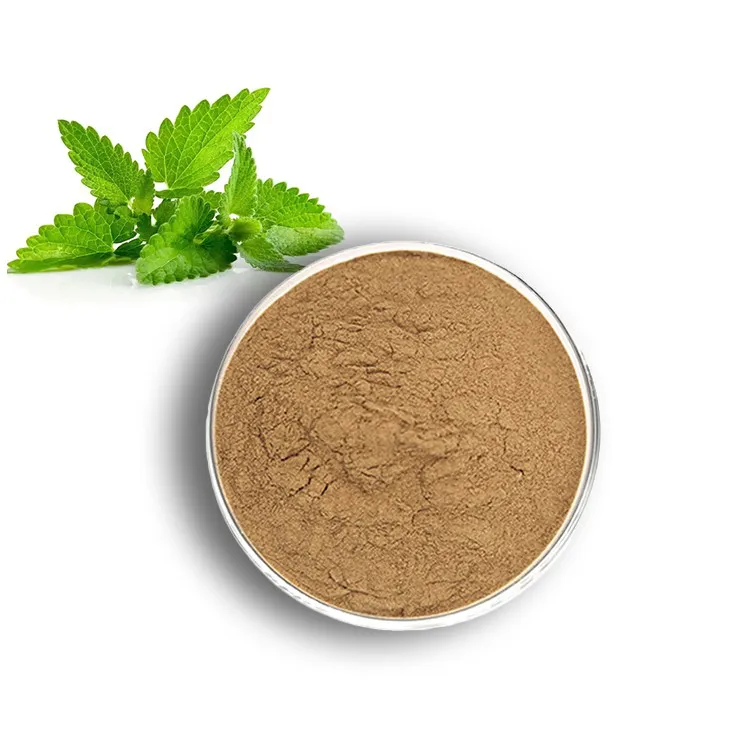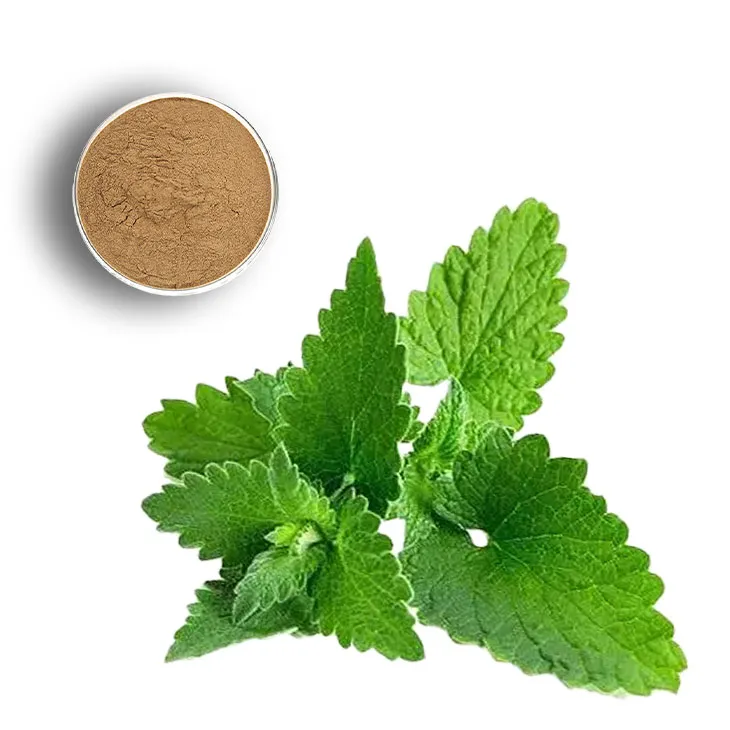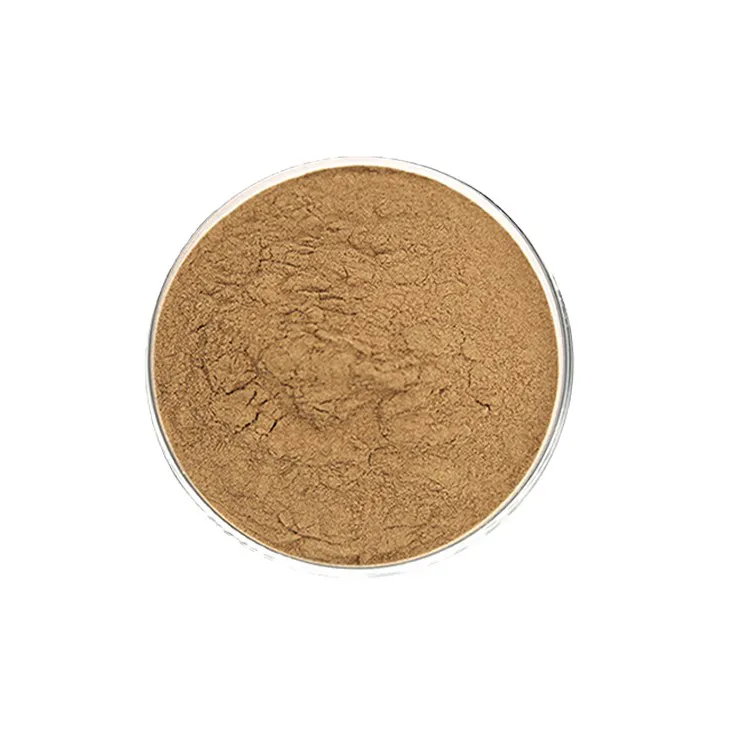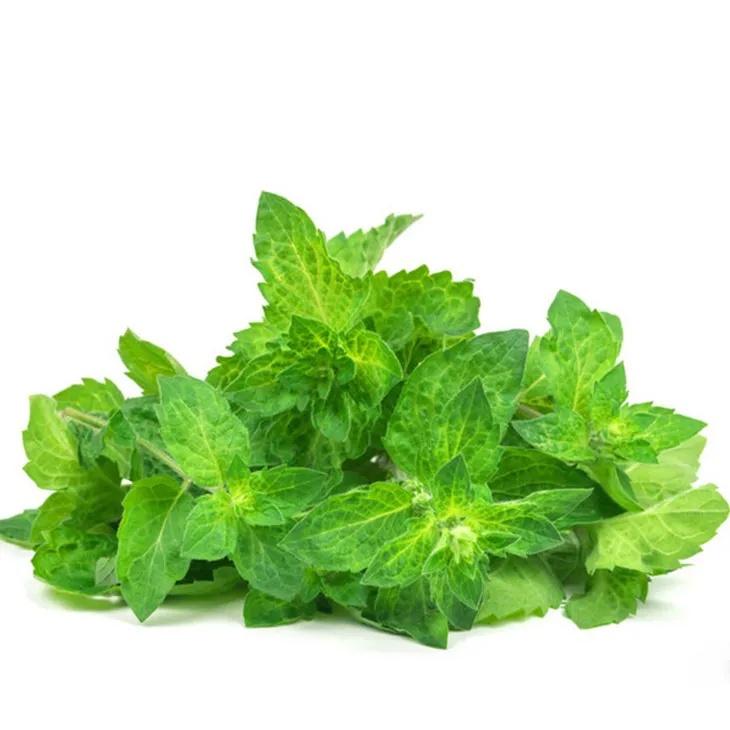- 0086-571-85302990
- sales@greenskybio.com
How to Extract Lemon Balm Extract from Plants.
2024-11-29

1. Introduction
Lemon balm (Melissa officinalis) is a herbaceous plant that has been cherished for centuries due to its numerous beneficial properties. The Lemon Balm Extract is a valuable substance with a wide range of applications in aromatherapy, herbal medicine, and as a natural flavoring agent. Extracting this extract from the plant involves a series of processes that are influenced by various factors. In this article, we will explore the secrets behind extracting Lemon Balm Extract, including the factors influencing the extraction process and different extraction methods.

2. Factors Influencing the Extraction Process
2.1 Plant Quality
The quality of the lemon balm plant is of paramount importance when it comes to extraction. High - quality plants are typically those that are grown in optimal conditions. They should be free from diseases, pests, and excessive exposure to pollutants. Healthy plants usually have a rich concentration of the active compounds that are desired in the extract. For example, plants grown in well - drained soil, with adequate sunlight and water supply, are more likely to produce a higher - quality extract. Moreover, the age of the plant also matters. Younger plants may have a different chemical composition compared to more mature ones, and this can affect the properties of the extract.
2.2 Extraction Time
The extraction time is a crucial factor in obtaining a high - quality Lemon Balm Extract. Different extraction methods may require different optimal extraction times. If the extraction time is too short, not all of the desired compounds may be extracted from the plant material. On the other hand, if the extraction time is too long, it may lead to the extraction of unwanted compounds or the degradation of the desired ones. For instance, in a simple infusion method, if the plant material is left in the solvent for too long, it may start to decompose, resulting in a less - than - ideal extract. Generally, it is necessary to conduct preliminary experiments to determine the appropriate extraction time for a specific extraction method and the desired end - product.
2.3 Temperature
Temperature plays a significant role in the extraction process. In general, an increase in temperature can accelerate the extraction rate as it can enhance the solubility of the active compounds in the solvent. However, high temperatures can also cause the degradation of heat - sensitive compounds. For example, some of the volatile oils in lemon balm, which are important for its aroma and therapeutic properties, may be lost if the extraction temperature is too high. On the contrary, very low temperatures may slow down the extraction process to an unacceptable level. Therefore, a balance must be struck to ensure that the extraction is efficient while preserving the integrity of the active compounds. In some modern extraction techniques, precise temperature control is possible, which helps to optimize the extraction process.

3. Traditional Approaches to Extract Lemon Balm Extract
3.1 Infusion
- First, gather fresh lemon balm leaves. It is important to select healthy, undamaged leaves. Wash them gently to remove any dirt or debris.
- Next, chop the leaves into small pieces. This increases the surface area available for extraction.
- Then, place the chopped leaves in a heat - resistant container. Add boiling water to the container. The ratio of leaves to water can vary depending on the desired concentration of the extract, but a common ratio is about 1:10 (leaves to water).
- Let the mixture steep for 10 - 15 minutes. During this time, the active compounds in the leaves will dissolve into the water.
- Finally, strain the mixture through a fine - mesh sieve or cheesecloth to remove the plant material, leaving behind the lemon balm infusion. This infusion can be used directly in herbal teas or as a base for further processing in aromatherapy or as a natural flavoring.
3.2 Maceration
- Begin by collecting the lemon balm plant parts, such as the leaves and stems. These should be dried thoroughly to prevent the growth of mold during the maceration process. Dry them in a well - ventilated area, away from direct sunlight.
- Once dried, chop the plant material into small pieces. Place the chopped material in a glass jar.
- Add a suitable solvent, such as ethanol or vegetable oil. The choice of solvent depends on the intended use of the extract. For example, if the extract is to be used in aromatherapy, an essential - oil - friendly solvent like ethanol may be preferred. If it is for use in cooking as a natural flavoring, vegetable oil can be a good option. Fill the jar with enough solvent to completely cover the plant material.
- Seal the jar tightly and let it sit in a cool, dark place for 2 - 4 weeks. During this time, the solvent will gradually extract the active compounds from the plant material.
- After the maceration period, strain the mixture through a filter to separate the plant material from the solvent - based extract. The resulting extract can be stored in a dark, airtight container for future use.

4. Modern Approaches to Extract Lemon Balm Extract
4.1 Supercritical Fluid Extraction (SFE)
Supercritical fluid extraction is a relatively advanced technique for extracting lemon balm extract. Supercritical fluids, such as carbon dioxide (CO₂), are used in this method. CO₂ is preferred because it is non - toxic, non - flammable, and has a relatively low critical temperature and pressure.
- The process involves pressurizing CO₂ above its critical point, where it exhibits properties of both a gas and a liquid. This supercritical CO₂ can penetrate the plant material effectively and dissolve the desired compounds.
- By adjusting the pressure and temperature, the selectivity of the extraction can be controlled. This means that specific compounds can be targeted for extraction while leaving others behind.
- Once the extraction is complete, the pressure is released, and the CO₂ returns to its gaseous state, leaving behind a pure extract. This method is often used to obtain high - quality essential oils from lemon balm, which are highly valued in aromatherapy and the perfume industry.
4.2 Microwave - Assisted Extraction (MAE)
Microwave - assisted extraction utilizes microwave energy to enhance the extraction process.
- The lemon balm plant material is placed in a suitable solvent in a microwave - safe container.
- When the microwave is turned on, the microwaves interact with the solvent and the plant material. This interaction causes rapid heating, which in turn increases the extraction rate. The heat generated by the microwaves can break down the cell walls of the plant more quickly, allowing the active compounds to be released into the solvent.
- However, careful control of the microwave power and extraction time is required to avoid over - heating and the degradation of the compounds. This method is relatively fast compared to traditional methods and can be used to extract a variety of compounds from lemon balm for different applications, such as in herbal medicine research.

5. Uses of Lemon Balm Extract
5.1 In Aromatherapy
Lemon balm extract, especially in the form of essential oils, is widely used in aromatherapy. The pleasant lemon - like aroma has a calming and relaxing effect on the mind. It can be used in diffusers to create a soothing atmosphere in homes, spas, or meditation rooms. Inhaling the aroma of lemon balm extract can help reduce stress, anxiety, and promote better sleep. Additionally, it can be blended with other essential oils, such as lavender or chamomile, to enhance its therapeutic effects.
5.2 In Herbal Medicine
In herbal medicine, lemon balm extract has been used for centuries to treat various ailments. It has antiviral, antibacterial, and anti - inflammatory properties. It can be used topically in the form of creams or ointments to soothe skin irritations, such as insect bites or minor burns. Internally, it can be consumed as a tea or tincture to aid digestion, relieve indigestion, and reduce nausea. Some studies also suggest that lemon balm may have a positive effect on cognitive function and can be used in the management of mild cases of Alzheimer's disease.
5.3 As a Natural Flavoring Agent
Lemon balm extract is a popular natural flavoring agent in the food and beverage industry. Its fresh, lemony flavor can enhance the taste of a variety of products. It can be used in baking, such as in cakes, cookies, or muffins, to add a unique flavor. In the beverage industry, it can be added to teas, lemonades, or even alcoholic beverages like gin or vodka to give a refreshing and natural lemon - like taste without the use of artificial flavorings.
6. Conclusion
Extracting lemon balm extract from plants is a complex process that is influenced by multiple factors such as plant quality, extraction time, and temperature. Traditional methods like infusion and maceration have been used for a long time, while modern techniques such as supercritical fluid extraction and microwave - assisted extraction offer more precise and efficient ways to obtain high - quality extracts. The resulting lemon balm extract has a wide range of uses in aromatherapy, herbal medicine, and as a natural flavoring agent. As research continues, we can expect to see further improvements in the extraction methods and more diverse applications of this valuable plant extract.
FAQ:
What factors are important for plant quality when extracting lemon balm extract?
The plant should be fresh and free from diseases and pests. It is best to harvest lemon balm at the right time, usually when it is in full bloom, as this is when the active compounds are at their peak. Also, the growth environment of the plant, such as soil quality, sunlight exposure, and water availability, can affect the quality of the plant and thus the extract.
How does extraction time affect the extraction of lemon balm extract?
If the extraction time is too short, not enough of the active compounds may be extracted from the lemon balm. However, if the extraction time is too long, it may lead to the degradation of some active substances or the extraction of unwanted compounds. Different extraction methods may require different optimal extraction times, which need to be determined through experimentation.
What role does temperature play in the extraction of lemon balm extract?
Temperature can significantly influence the extraction process. A higher temperature may increase the solubility of the active compounds in the solvent, which can speed up the extraction process. But excessive heat can also cause the decomposition of some heat - sensitive compounds. On the other hand, a lower temperature may result in a slower extraction rate but may preserve the integrity of more delicate compounds.
What are the traditional methods for extracting lemon balm extract?
One traditional method is maceration. This involves soaking the lemon balm plant material in a solvent (such as alcohol or oil) for an extended period, usually several days to weeks. Another traditional approach is steam distillation, where steam is passed through the plant material, and the volatile compounds are carried over and condensed to obtain the extract.
What are the modern methods for extracting lemon balm extract?
Modern methods include supercritical fluid extraction. This uses supercritical fluids, such as supercritical CO2, which have properties between a gas and a liquid. It offers high selectivity and can extract compounds without leaving behind harmful residues. Another modern technique is ultrasonic - assisted extraction, which uses ultrasonic waves to disrupt the plant cells and enhance the extraction efficiency.
Related literature
- The Extraction and Applications of Lemon Balm Extract"
- "Optimizing the Extraction of Lemon Balm Compounds: A Comprehensive Review"
- "Traditional and Modern Extraction Techniques for Lemon Balm"
- ▶ Hesperidin
- ▶ Citrus Bioflavonoids
- ▶ Plant Extract
- ▶ lycopene
- ▶ Diosmin
- ▶ Grape seed extract
- ▶ Sea buckthorn Juice Powder
- ▶ Fruit Juice Powder
- ▶ Hops Extract
- ▶ Artichoke Extract
- ▶ Mushroom extract
- ▶ Astaxanthin
- ▶ Green Tea Extract
- ▶ Curcumin
- ▶ Horse Chestnut Extract
- ▶ Other Product
- ▶ Boswellia Serrata Extract
- ▶ Resveratrol
- ▶ Marigold Extract
- ▶ Grape Leaf Extract
- ▶ New Product
- ▶ Aminolevulinic acid
- ▶ Cranberry Extract
- ▶ Red Yeast Rice
- ▶ Red Wine Extract
-
Medicinal Marshmallow Extract
2024-11-29
-
Hesperidin
2024-11-29
-
Maca Extract
2024-11-29
-
Cat Claw Extract
2024-11-29
-
Beta Carotene
2024-11-29
-
Nettle Root Extract
2024-11-29
-
Epimedium extract powder
2024-11-29
-
Black Garlic Extract
2024-11-29
-
Centella Asiatica Extract
2024-11-29
-
Dandelion Leaf Extract
2024-11-29





















